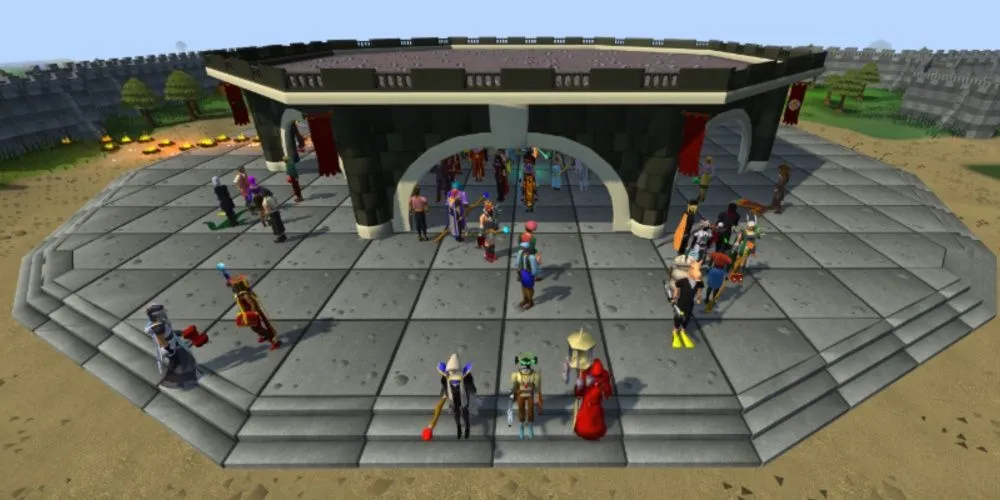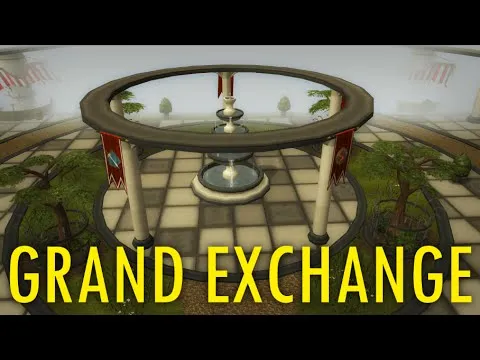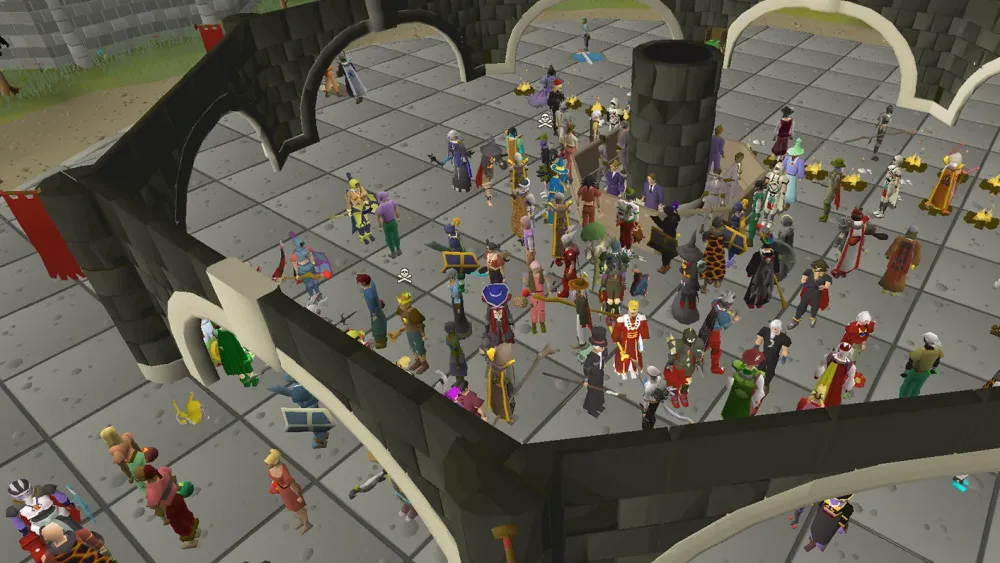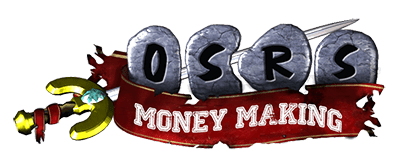Your cart is empty
Grand Exchange History in Old School RuneScape

The Grand Exchange, commonly known as the GE, is a cornerstone of trading in Old School RuneScape (OSRS), revolutionizing how players buy and sell items. Introduced to streamline commerce, its history is intertwined with player debates, economic shifts, and game updates. This blog post explores the origins, evolution, and impact of the GE in OSRS, shedding light on its significance in the game’s economy and community.
Before the GE, trading in RuneScape relied on player-to-player interactions, often in crowded marketplaces like Varrock and Falador. These manual trades were time-consuming and prone to scams, prompting Jagex to introduce a more efficient system.
Pre-GE Trading Challenges
Early RuneScape trading involved shouting offers in busy areas or using forums like Zybez. Players faced several issues:
- Time-Intensive: Finding a buyer or seller could take hours.
- Scamming Risks: Dishonest trades were common, especially for high-value items.
- Price Inconsistency: Item values varied widely, making fair trades difficult.
Introduction in RuneScape (2007)
The Grand Exchange was first launched in RuneScape on November 26, 2007, as a centralized trading hub northwest of Varrock. It allowed players to post buy or sell offers that automatically matched, eliminating the need for direct interaction. This system resembled a real-world commodities exchange, with prices driven by supply and demand. However, its introduction sparked controversy, as some players felt it reduced the social aspect of trading.
Grand Exchange in Old School RuneScape

OSRS, launched in 2013 as a nostalgic return to 2007 RuneScape, initially lacked the GE. Trading reverted to manual methods, reigniting debates about convenience versus tradition. The GE’s eventual inclusion in OSRS was a pivotal moment.
Community Poll and Release (2015)
In January 2015, Jagex polled the OSRS community on adding the GE, requiring a 75% approval rate. The poll, held from January 12 to January 19, passed narrowly with 76.3% support. On February 26, 2015, the GE was released, replacing the Trading Post, a less automated system introduced earlier. The GE retained familiar features from 2007, such as eight trade slots for members and three for free-to-play players.
Player Reactions and Concerns
The GE’s arrival divided the community. Supporters praised its efficiency, while critics argued it diminished player interaction and made the game “too easy.” Some feared it would mirror RuneScape 3’s automated systems, eroding OSRS’s old-school charm. A forum post from 2015 highlighted concerns about holiday items like Christmas Crackers dropping in value due to easier trading. Despite these debates, the GE became integral to OSRS.
Economic Impact of the Grand Exchange

The GE transformed OSRS’s economy, stabilizing prices and enabling data-driven trading. Its database and market mechanics reshaped how players approached wealth-building.
Price Stabilization and Market Watch
The GE’s pricing algorithm, updated every six hours, reflects recent trades, balancing supply and demand. The Grand Exchange Database, accessible via the RuneScape website, tracks price changes over 180 days, resembling a stock market. High-volume items like runes, ores, and arrows dominate trades, while low-volume items like partyhats update less frequently. The database’s Market Watch feature empowers players to analyze trends, making merchanting more strategic.
Impact on Merchanting
Before the GE, merchanting (buying low and selling high) relied on manual trades and insider knowledge. The GE reduced profit margins for traditional merchants by making prices transparent but introduced new strategies like “flipping” (buying and reselling quickly). However, Jagex monitors for price manipulation, considering it a reportable offense to prevent monopolies on critical items.
| Item Type | Trade Volume | Example Items |
|---|---|---|
| High Volume | Daily | Runes, Ores, Arrows |
| Low Volume | Weekly | Partyhats, Rare Items |
| Non-Tradeable (GE) | N/A | Burnt Food, Platinum Tokens |
Features and Functionality
The GE’s design prioritizes convenience, with features that enhance usability and accessibility across platforms.
Trading Mechanics
Players can post buy or sell offers without waiting at the GE, collecting items and coins at any bank. A chatbox notification alerts players to trade updates (e.g., “Transaction completed”). Members enjoy eight slots, while free players get three, with restrictions on purchasing members-only items. Ironmen can only buy bonds via a unique interface, preserving their self-sufficiency.
Unique Features and NPCs
The GE includes NPCs like Bob Barter (herb prices and potion decanting) and Murky Matt (rune prices and item charging). Item sets, like armor or the dwarf multicannon, can be assembled for storage, though Ultimate Ironmen cannot use this feature. A short jingle, incorporating “The Trade Parade” melody, plays when trades complete, adding a nostalgic touch.
Mobile and Accessibility
The GE is optimized for OSRS Mobile, though quirks exist, like a non-functional “-” sign on Android’s numeric keyboard. Teleport options, such as Varrock Teleport (toggleable to GE with Varrock Medium Diary) or a Ring of Wealth, make access easy. These features ensure the GE caters to both casual and dedicated players.
Legacy and Ongoing Relevance
Since its OSRS debut, the GE has remained a vital system, adapting to player needs while sparking occasional debates about its impact.
Evolution and Updates
Post-2015, Jagex made minor tweaks, such as adding new item sets and refining price algorithms. Community feedback led to polls for potential features like CoinShare, though not all were implemented. The GE’s initial prices were drawn from Trading Post data and Zybez, adjusting over time to reflect true market values.
Community Sentiment
While some players still nostalgic for manual trading, most embrace the GE’s convenience. Reddit discussions highlight requests for enhancements, like expanding the trade history tab to store more transactions. The GE’s role in flipping and investing remains a hot topic, with communities like r/2007scape sharing strategies.
Cultural Impact
The GE is more than a trading hub; it’s a social and economic landmark. Bank-standing at the GE, often for skilling or chatting, is a cultural phenomenon, as noted in analyses of player behavior. Its introduction is celebrated annually, with posts on X marking milestones like its 16th anniversary in 2023. The GE continues to shape OSRS’s identity, balancing nostalgia with modern gameplay.
In conclusion, the Grand Exchange’s history in OSRS reflects a delicate balance between innovation and tradition. From its contentious introduction to its current indispensability, the GE has reshaped trading, economics, and community dynamics. Whether you’re flipping runes or buying a partyhat, the GE remains at the heart of Gielinor’s bustling economy.
